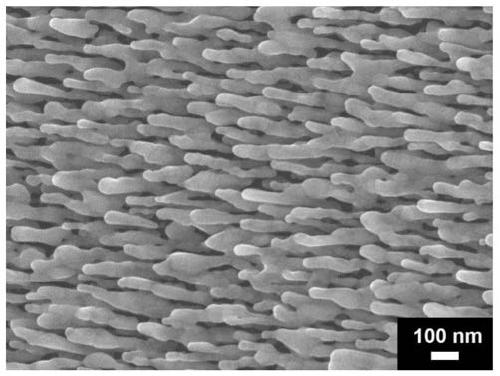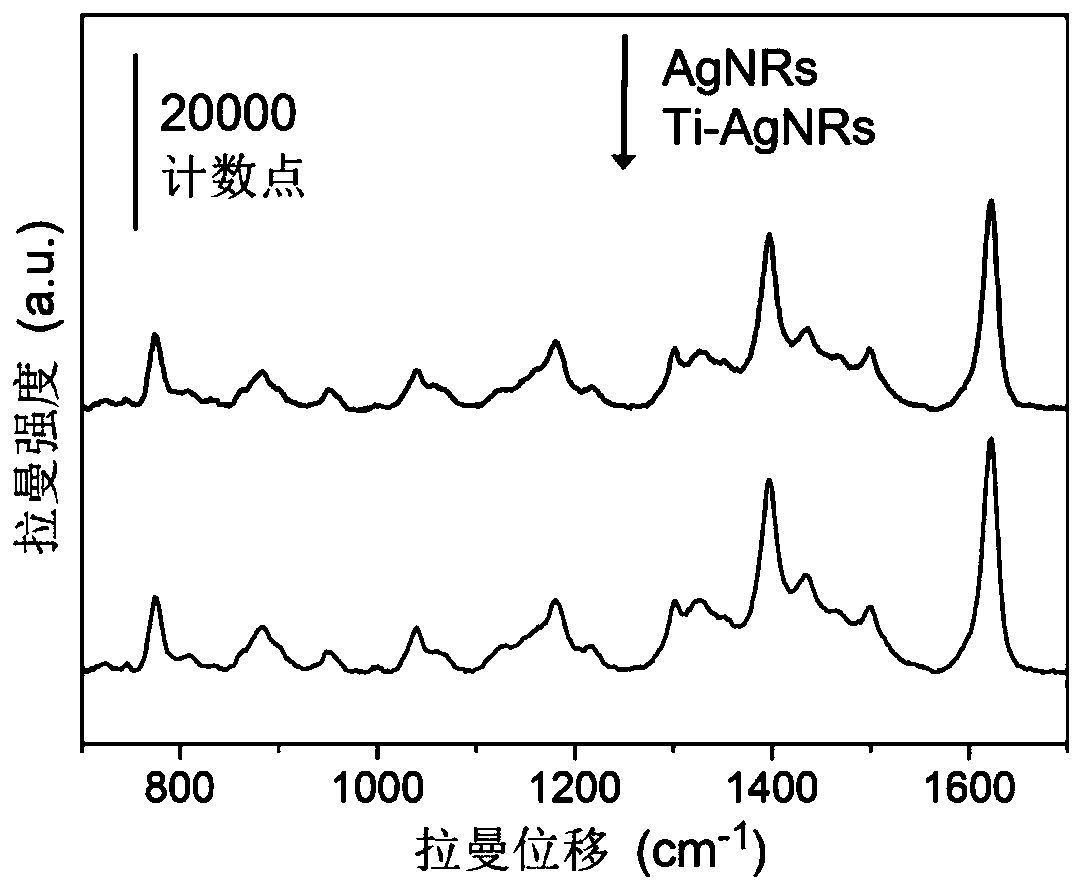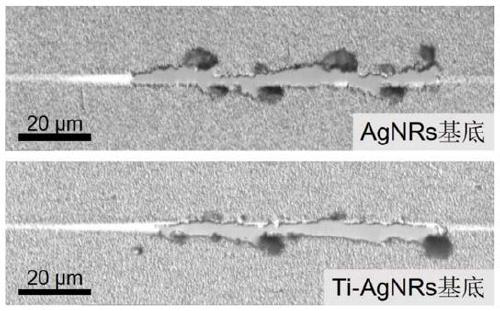A method for preparing surface-enhanced Raman substrates by improving the binding force of membrane substrates
A surface-enhanced Raman and film-substrate bonding technology, which is applied in the direction of superimposed layer plating, vacuum evaporation plating, coating, etc., can solve the problem of weak bonding between noble metal thin films and substrate materials, which affects the practical application of SERS substrates, Limit the development of surface-enhanced Raman technology and other issues, and achieve the effects of improving substrate adhesion, promoting diffusion and interaction, and excellent stability
- Summary
- Abstract
- Description
- Claims
- Application Information
AI Technical Summary
Problems solved by technology
Method used
Image
Examples
Embodiment 1
[0026] 1).Use acetone, alcohol, and deionized water to ultrasonically clean silicon substrates, glass, and other substrates in sequence and dry them in the air;
[0027] 2). Fix the cleaned substrate on the sample stage of the electron beam evaporation coating machine, and pump the chamber of the coating machine to a vacuum degree of 10 -5 Pa level;
[0028] 3). Using metal Ti as the target material, a transition layer film is plated on the substrate, and the incident angle of the electron beam is adjusted to 0°, and the evaporation rate of Ti is The deposition thickness is 15nm;
[0029] 4). Using metallic Ag as the target material, plate an Ag nanorod array thin film on the transition layer, adjust the incident angle of the electron beam to 85°, and make the sample stage static, and grow inclined silver nanorods with a nanorod length of 700nm array film;
[0030] 5).Using the nano-scratch method to evaluate the film-base bonding force of the film, a diamond indenter is u...
Embodiment 2
[0035] 1).Use acetone, alcohol, and deionized water to ultrasonically clean silicon substrates, glass, and other substrates in sequence and dry them in the air;
[0036] 2). Fix the cleaned substrate on the sample stage of the electron beam evaporation coating machine, and pump the chamber of the coating machine to a vacuum degree of 10 -5 Pa level;
[0037] 3). Using metal Ti as the target material, a transition layer film is plated on the substrate, and the incident angle of the electron beam is adjusted to 0°, and the evaporation rate of Ti is The deposition thickness is 25nm;
[0038] 4). Using metallic Ag as the target material, plate an Ag nanorod array thin film on the transition layer, adjust the incident angle of the electron beam to 86°, and make the sample stage static, and grow obliquely inclined silver nanorods with a nanorod length of 800nm array film;
[0039] 5).Using low-temperature atomic layer deposition technology, set the reaction chamber temperature o...
Embodiment 3
[0045] 1).Use acetone, alcohol, and deionized water to ultrasonically clean silicon substrates, glass, and other substrates in sequence and dry them in the air;
[0046] 2). Fix the cleaned substrate on the sample stage of the electron beam evaporation coating machine, and pump the chamber of the coating machine to a vacuum degree of 10 -5 Pa level;
[0047] 3). Using metal TiN as the target material, a transition layer film is plated on the substrate, and the incident angle of the electron beam is adjusted to 0°, and the evaporation rate of TiN is The deposition thickness is 40nm;
[0048] 4). Using metallic Ag as the target material, plate an Ag nanorod array thin film on the transition layer, adjust the incident angle of the electron beam to 87°, and make the sample stage static, and grow obliquely inclined silver nanorods with a nanorod length of 900nm array film;
[0049] 5).Using low-temperature atomic layer deposition technology, set the temperature of the reaction ...
PUM
| Property | Measurement | Unit |
|---|---|---|
| thickness | aaaaa | aaaaa |
| thickness | aaaaa | aaaaa |
| thickness | aaaaa | aaaaa |
Abstract
Description
Claims
Application Information
 Login to View More
Login to View More - R&D
- Intellectual Property
- Life Sciences
- Materials
- Tech Scout
- Unparalleled Data Quality
- Higher Quality Content
- 60% Fewer Hallucinations
Browse by: Latest US Patents, China's latest patents, Technical Efficacy Thesaurus, Application Domain, Technology Topic, Popular Technical Reports.
© 2025 PatSnap. All rights reserved.Legal|Privacy policy|Modern Slavery Act Transparency Statement|Sitemap|About US| Contact US: help@patsnap.com



